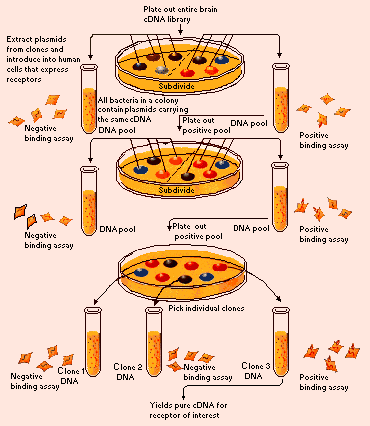
| Figure 2. |
 |
| Selecting a clone that contains the cDNA for a neurotransmitter receptor. A brain cDNA library is plated on a solid agar surface at a low density so that each bacterium in the library is widely separated from its neighbors. The agar contains nutrients enabling the bacteria to grow and divide. The descendants of each bacterium remain close to it and together are a clone, each member containing the same cDNA. To screen for the receptor of interest, the clones from each half of the plate are introduced into a population of human cells in tissue culture. If a clone encoding the receptor of interest is inserted into a human cell, the receptor is synthesized and inserted on the cell's surface. Cells containing this receptor are detected with a ligand-binding assay. The clones from the part of the plate that are found to be positive in this assay are then diluted (because each clone contains thousands of bacteria) and applied to a new plate. By repeating this process, most brain cDNAs are eliminated. It then becomes practical to sample and assay each remaining clone directly until the desired one is found. (From ref. 2). |
published 2000